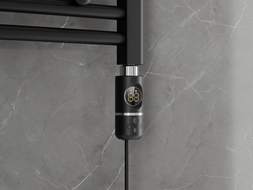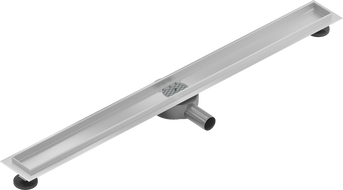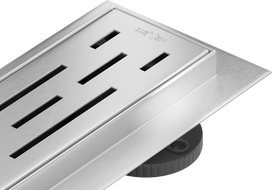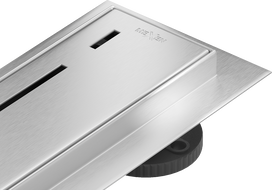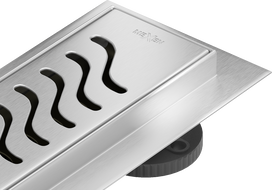
When renovating a bathroom, we increasingly give up the shower tray. The shower cabin is placed directly on the bathroom floor in this situation. This is a very modern solution that allows for creating an extraordinary bathroom design. However, to ensure that the drain effectively removes water, it needs to be cleaned regularly. This is not a complicated task and can be easily done independently, yet it should not be forgotten!
How to keep the linear drain clean?
Daily showering is accompanied by various impurities getting into the linear drain along with the water. First and foremost, there is foam and residue from the detergents used during the shower. Secondly, hair may enter the drain, and sometimes larger debris such as pieces of tissues or cotton swabs. Solid elements entering the interior of the linear drain can block the water flow, and the accumulating impurities can cause unpleasant odors to escape from the sewage system.
Owners of small bathrooms understand how troublesome a clogged shower drain can be. Water spills onto the tiles instead of draining through the outlet, which necessitates cleaning the floor after each shower. A clogged linear drain hinders the efficient drainage of water from the shower. Water, foam, and other impurities accumulating in the drain channel can create a sludge that may ultimately lead to a complete blockage of the linear drain. To ensure trouble-free use of the shower area, we must remember how important it is to clean the linear drain.
How to clean linear drains?
Cleaning a linear wall or floor drain, as well as cleaning the siphon, is not particularly difficult. You can do it in your bathroom by yourself. If you do it regularly, it won’t take too much time. If you notice that the optimal flow rate of the drain has decreased and water is draining more slowly, or if unpleasant odors are coming from the drain, it means you need to take action to clean it immediately. If rinsing with running water is not enough, other more effective methods should be used.
First, you can try a simple home remedy that works well in linear drains, which involves pouring about half a cup of baking soda into the drain followed by the same amount of vinegar. A chemical reaction will occur between these substances, causing the sludge to break loose from the drain components. Then, it’s enough to rinse the drain with warm water, and the impurities will flow freely into the sewage system. If necessary, the entire process can be repeated.
For more stubborn impurities, try cleaning the drain with one of the available pipe unclogging agents. However, remember to exercise particular caution, as these are products with irritating properties. When choosing chemical agents for cleaning the drain, it’s worth getting familiar with their ingredients and properties. This will help avoid situations where an overly aggressive product may damage seals or permanent drainage components.
How to deal with a heavily clogged linear drain?
Sometimes it may happen that cleaning with home methods and chemical agents does not yield results. If, despite attempts to clean, unpleasant odors continue to emanate from the drain, and water still does not drain as quickly as it should, it’s likely that in order to clean the siphon and linear drain, it needs to be disassembled. First, you must deal with the exterior part of the drain. One of the most common issues is the blockage of the drain grate with hair or other small items that may have become lodged in it.
If the drain model allows it, remove the siphon and try to clean it thoroughly. By hand! You have to get a bit dirty, there’s no way around it! When putting it back, pay attention to the position of the sealing o-ring of the siphon, as it is what keeps the unpleasant odors from the sewage system at bay. If, after cleaning the siphon, effective drainage of water is still not possible, you can remove the top cover of the linear drain and eliminate any remaining sludge with a brush.
The small width of the linear drain often makes cleaning it difficult, so it is essential to keep it clean and ensure that it does not get clogged. The easiest way to do this is to rinse the drain with running water after each shower. Importantly and worth emphasizing - the linear drain must be cleaned regularly, as this will help avoid situations where professional assistance will be necessary.













